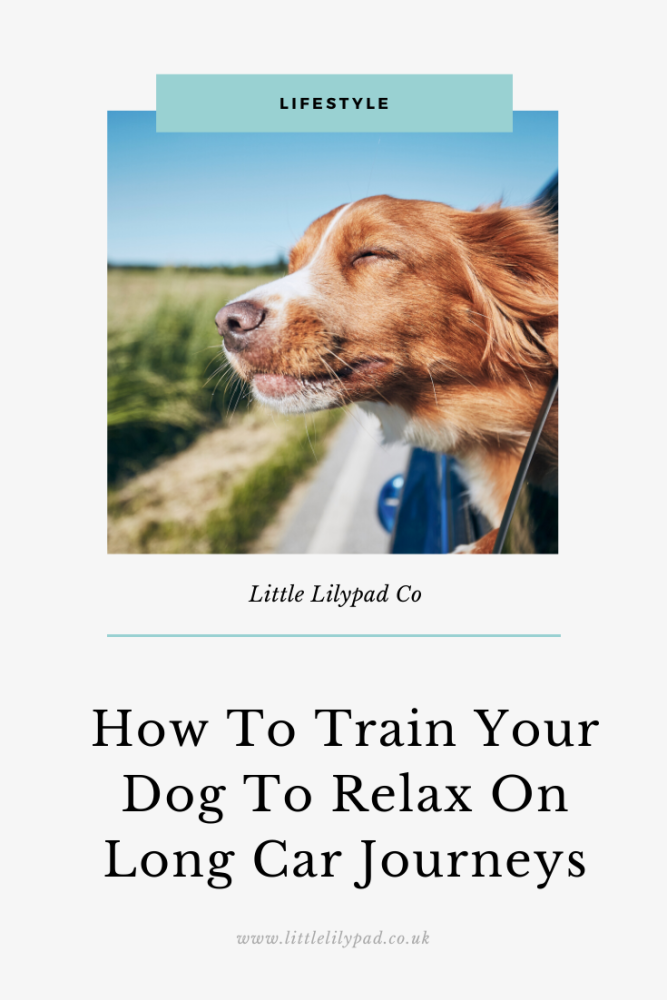How To Train Your Dog To Relax On Long Car Journeys
Posted on
My youngest daughter is desperate for us to have a dog, although I am not sure that the cat would be so happy about it. She takes every opportunity to walk her friends dogs or "train" our neighbours dog and I am quite sure that she would actually take great care of a new canine friend but there is more to consider than daily walks and holding a paw.

Any experienced dog owner can tell you that, while there are few joys in life as great as taking your dog out for an adventure in the great outdoors, not every dog enjoys the car journey needed to get there. Some dogs can’t even make it to the vet without kicking up a fuss.
Below are some simple tips for training your dog to relax more on long car journeys.
Prepare Them For The Experience
Before you begin training your dog in any regard, you first need to make sure that both you and they are prepared for the experience. Training your dog to stay calm and relaxed on long car journeys will inevitably require you to put your pet in the car at some point. No matter how careful or skilled you are as a driver, having your pet in the vehicle with you exposes them to the risk of injury[1].
Because of this, it is vital that you have dog insurance in place before you take your dog on any car journeys. You can use a service like Everypaw to compare dog insurance quotes online. Everypaw lets you compare different types of cover, including Lifetime Pet Insurance and Maximum Benefit, to find the right cover for your dog.
You can begin acclimating your dog to car journeys by having them enter and exit your vehicle while it is stationary. This lets them get used to climbing in and out of the car and will make the space feel more familiar to them. This will also give you the opportunity to ensure that you have a suitable space for your dig while the vehicle is in motion.
Begin With Shorter Trips
There are a number of reasons that dogs might become anxious on a car journey, taking shorter trips will help you to assess how your dog responds to being in the car while you are driving. For example, some dogs, like people, suffer from motion sickness, which can turn into a source of anxiety for them during a journey. Signs of a nauseous dog include excessive drooling, yawning, or whining. If your dog actually vomits during the journey, motion sickness is likely a problem for them[2].
Taking shorter trips before you try to put your dog through the stress of longer journeys enables them to acclimatise to conditions in the car, while also providing you with the opportunity to observe their behaviour and make a plan for transporting them accordingly.

Keep Your Dog Under Control
When you’re driving with your dog, it is essential that you keep them under control, either in a crate in the boot or using a harness.
The law in the UK[3] requires drivers to secure their dog, so that it does not distract the driver. As such, you need to find a harness or crate that your dog will feel comfortable in and then get them used to spending time in it.
Foster A Positive Association
Not every dog will naturally take to car rides; some dogs really don’t want to get in the car and go anywhere. However, you can change your dog’s conditioning and turn a negative response into a positive one with the right training. The trick here is positive reinforcement - you can use rewards to encourage your dog to form a positive association with your car and to view getting in it as a rewarding act.
As you begin to take your dog on longer and longer car rides, make sure that you are constantly providing them with positive reinforcement. Speak to them in a cheerful tone as you drive along and make sure that they have access to their favourite toys and treats - these will help them to relax and develop a positive association with being in your car.
Keep The Temperature Cool
Every dog owner understands the importance of ensuring that their pet is never left alone in a hot vehicle. This can easily lead to the death of a dog if they are alone for too long[4]. While the majority of dog owners are good at following this simple rule, many are much less alert to the dangers of a dog overheating during a long car journey.
Remember, dogs are not people and they will react differently to the same circumstances. Just because you and your family feel fine in a hot vehicle, it doesn't necessarily mean that your dog is going to be ok with the same conditions. You should always have the air conditioning running whenever possible, and you should ideally keep windows open as well when your dog is travelling with you but avoid opening them all the way. It is also essential that you keep water in your car, use a special water bowl to enable your dog to drink while the car is in motion.
With the right approach to training and a little patience, you can teach your dog to at least tolerate a long journey in your car. Having a stressed-out dog in the back seat is enough to stress any driver, it is worth taking the time to properly prepare and train your dog beforehand.







Add a comment: